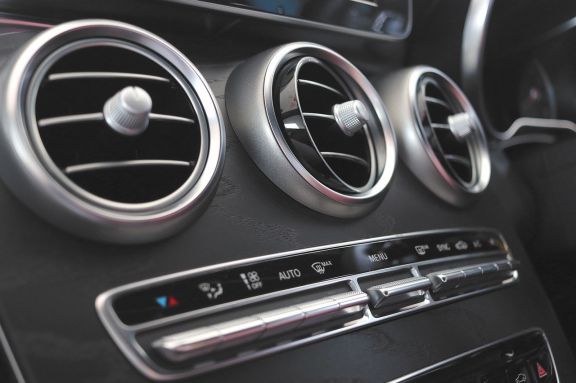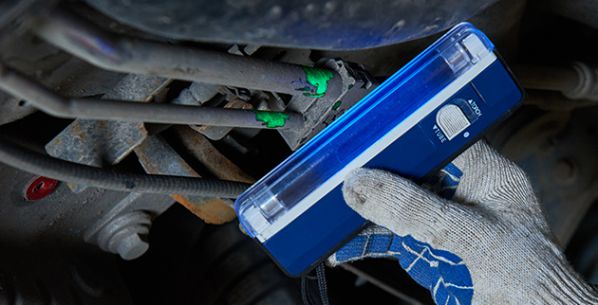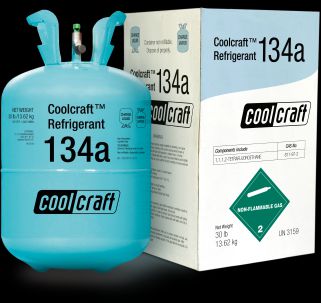You’re trying to revive a car that’s been neglected — and one of the first steps is to recharge the AC. Should you add oil when you’re adding refrigerant? How much of it should you add? Is it really that necessary?
We’ll address all of your questions in this detailed article, to give you all the information you’d require when taking on a task like recharging your car’s AC.
Do I need to add oil when recharging AC?
Yes, you should ideally add some oil when you’re recharging your AC, but only after fixing the leaks. It’s important to add the right amount, as adding too much oil can be just as dangerous.
You might be facing a different issue with your AC. If you’re struggling with bleeding out your overcharged AC, check out our article on how to solve that!

Table of Contents
Do I Need to Add Oil When Recharging AC?
When recharging your car’s air conditioning (AC) system, you may need to add oil to the system. The type and amount of oil required will depend on the specific AC system in your vehicle. It is important to follow the manufacturer’s recommendations and use the correct type and amount of oil to ensure that the AC system functions properly.
Why do I need to add oil when recharging AC?
You might be wondering why this step is necessary at all. Can’t you just top off the refrigerant and call it a day?
Since we’re dealing with recharging an AC, you probably experienced a couple of leaks and you’re having to refill the refrigerant. It’s likely that the existing oil was also expelled during the leakage process. This happens because it’s easy for oil to escape when the AC is under high pressure.
Oil is a necessary component for the AC to function smoothly in a car. It lubricates the insides, prevents corrosion, and also acts as a protective barrier between the refrigerant and the insides of the AC.
Furthermore, oil acts as a protectant against unwanted moisture in your system. Even if the car is abandoned over a period of time, any remaining oil will keep away any moisture from entering in. That’s why you need to accurately gauge the situation of your leaks so you can get a clear picture of whether there is still oil in your system or if it has all leaked away.
What Are the Signs Your AC Compressor is Running Out of Fuel?
Your AC compressor should not have too much oil or be running low on lubrication to keep your air conditioning systems operating effectively.
As this flooded oil obstructs the passage of refrigerant via the condenser, your AC system will not cool as effectively as it should.
However, your AC compressor may die prematurely if it runs out of the essential fluid because the moving parts are not properly lubricated.
This article will look over the most common signs showing your AC compressor is out of fuel and how you can refill it.
Keep reading if you suspect your air conditioning system is failing due to a lack of oil.
Sign #1: The Load-Bearing Surfaces Are Wearing and Scoring.
Wear and abrasion on rods and bearings are two of the earliest indicators.
The reason for this is simple: the crankshaft does not have enough oil in the crankcase to lubricate the operating parts, resulting in increased friction.
The following is a list of the symptoms of insufficient lubrication in the AC compressor.
- Scored bearings (as previously stated).
- Scores or broken rods are also possible outcomes.
- A crankshaft that has been scored.
- There is a lack of oil in the crankcase.
Now, before it’s too late, you’ll almost certainly need to add some oil to your AC compressor.
If not, you could be looking at a hefty repair or replacement bill for the broken components.
Sign #2: Leakage

Before you can refill oil or refrigerant in your AC, you have to locate the leaks. Otherwise, you’ll be right back where you started. A leaking AC unit is extremely dangerous, as the refrigerant will evaporate and can cause combustion. That can lead to a terrible accident. Apart from that, it’s bad for the environment and your vehicle!
No matter how minor the leaks, you have to identify them and repair them. Since the refrigerant and oil escaped in the first place, you no doubt have a few minor leaks on your hands. Another reason why you should work on the leaks is that contamination can enter into the vehicle through the leaks. This contamination will not go away just because you recharge your vehicle!
How to identify leaks
It can be difficult to identify a leak in your vehicle because the oil is transparent. You can’t just feel around the insides of the car for any greasy bits. However, it definitely helps if you’ve had the leaks and the car abandoned for a period of time. That’s because, over time, generic dust and contaminants are attracted to the sticky oil residue and collect there. This leaves a clear trail of where the leak is in your car.
Apart from this, engine oil has a distinct chemical smell and an amber color. If you feel like there’s an oil leak, you’re probably right and should check it out. You can easily do this with some UV Fluorescent Leak Detection Dye that can help you identify and trace the leak.
Sign #3: The System Is Smoking!
Perhaps the most obvious symptom that your AC compressor is running short on fluid is when it suddenly emits a lot of black smoke.
This might be hazardous because it signifies that oil is nearly depleted (or exhausted).
In this scenario, you should turn off the air conditioner and replace it with oil before turning it back on.
Otherwise, you risk ruining it and having to replace the compressor for hundreds of dollars (based on your model).
A smoking compressor could indicate several things, like a defective heater core or a faulty compressor clutch. Hence, it’s crucial to rule out these possibilities before concluding.
Sign #4: Heat in The System
Returning to the topic of lubrication, a related symptom to be aware of is abnormal system heat.
Because of the absence of lubrication in the internal parts (due to a lack of oil), the system could overheat.
What causes this is as follows:
The system heats up because it must work harder to maintain appropriate cooling levels. After all, the components grind against one other and face more strain during operation.
Please remember that heat does not always indicate a lack of oil; it could also indicate a decline in the oil quality.
As a result, you’ll need to double-check not just the quantity (and replenish it) but also the quality of the oil.
Sign #5: The Air Conditioner Compressor Makes Noises and Smells
Noises or odors are another sign that your AC compressor is low on oil.
Still, noises (usually subtle creaking sounds) are primarily produced by insufficient lubrication in the parts, which, as we’ve seen, indicates an oil shortage.
Alternatively, your compressor may begin to emit a burnt-oil odor.
There are no assurances; therefore, the best course of action is to have the condition assessed as soon as possible to avoid future complications.
Which kind of refrigerant oil should I use?
Just as it is a big no-no to mix refrigerants (it is illegal according to federal law), you should also not mix the refrigerant oils. If you’re retrofitting an old R12 AC to now support R134a, don’t just stay away from R12 refrigerant! Stay away from R12 refrigerant oil as well.
You would require only the R134a refrigerant oil. This might seem like common sense but important enough to be reinstated to prevent accidents.

If you’re worried about not being able to add in the correct amount of refrigerant oil, you can also opt for a refrigerant that already has the oil mixed in with it. This will ensure that you’re not adding too much oil since the refrigerant already contains the right amount of oil in the right proportions.
Simply adding enough refrigerant will result in the correct amount of oil as well.
However, please note that this is to be done only when you are recharging your AC, and not each time you want to top off your AC with refrigerant!
Check your owner’s manual to see what kind of oil your compressor requires and how much you’ll need. Make sure that you get the oil that the manufacturer recommends.
For example, instead of PAG 46 oil, your AC compressor might need R134a refrigerant oil. It will damage your compressor if you use the incorrect oil. If you don’t have access to the owner’s manual, seek up your vehicle’s make and model online to learn more about the AC compressor.
Oils For AC Compressors
Although PAG oils are at the top of the compressor oil hierarchy, there are a few key exceptions to be aware of. Because it does not accumulate moisture from the atmosphere like other oils, polyalphaolefin (PAO) oil can substitute for some PAG oils.
Polyol ester (POE) oil is recommended and required in many circumstances for hybrid-electric vehicles that use electrically driven compressors.
Putting PAG oil in hybrids puts the vehicle at risk and puts the technician at risk of electrocution.
That’s why I insist you look and research which oil is compatible with your vehicle model.
Universal oil
Several businesses provide “universal” lubricants that claim to work in any vehicle (even hybrids) and with both R-12 and R-134a refrigerants.
The one-size-fits-all practicality of universal oils would appear to be a blessing for car specialists, given the wide variety of compressor oils on the market.
The primary issue with universal oils, according to experts, is the risk they bring to the cars in which they are utilized.
According to a study, a team of experts researched DENSO A/C compressors, and they found that garages did not use the right PAG oil required for DENSO compressors in a quarter of all cases.
Seizures and damage are unavoidable when the wrong oils are used, such as universal oils or oil mixes. This is because universal oils, frequently selected by garages, are PAO or mineral oils with a viscosity that differs from synthetic PAG oils. PAO oils don’t mix well with PAG oils or the refrigerants R-134a or R-1234yf, resulting in poor lubrication and wear. Furthermore, because of the various viscosities, a thinner oil layer forms between the cylinder and piston, which might induce seizures or reduce the compressor’s life expectancy.”
Not following manufacturer guidelines, in my opinion, is a prescription for catastrophe.
It’d be like Ford recommending 0W-20 motor oil, and then you put 10W-30 or 10W-40 in it. You wouldn’t do something like that. If the engine requires 10W-40, that’s what you’ll use, but some people believe when it comes to air conditioning. Well, it’s just A/C oil. I’ll throw everything in,’ which shouldn’t be the case.
Which AC Components Need to Be Oiled?
The compressor is an air conditioning system component that requires sufficient oil to function correctly.
Unless you’ve modified the compressor or there’s a leak causing the system to spill oil, there’s usually no need to add oil to your car’s present AC system.
A compressor requires an adequate amount of oil for lubrication.
It features numerous cylinders that compresscompresses refrigerant gassesgases and produce heat and friction.
The primary purpose of adding oil to the compressor is to minimize friction and lubricate the system thoroughly.
If there are any leaks in the system, one should repair them before adding the oil.
Otherwise, the system will quickly require more oil, and some components may fail.
What is The Purpose OF PAG Oil?
Polyalkylene Glycol, aka PAG Oil, is a unique oil mainly used for lubricating compressors of air conditioners in vehiclesvehicle.
A complete synthetic hygroscopic oil serves as a compressor lubricator for ACs, using R-134a refrigerant.
You must use the correct viscosity oil and know how much PAG oil to apply to the AC system.
PAG150 or PAG VC-46 are two different types of PAG oil with different numbers.
This is the viscosity of PAG, comparable to how 10W30 shows the viscosity of ordinary engine oil.
You’ll need to consult the owner’s manual to determine the proper PAG oil viscosity for the AC compressor.
How much oil should I add when recharging my AC?
This is the next most important question as you’re going about the task of recharging your AC. The first matter at hand is trying to figure out how much oil is remaining inside the system. This can only be figured out if you know the gravity of your leaks issue. If it’s a minor leak and you have it identified, you can infer that only refrigerant was lost, but the oil is still more or less in the system.

In this case, you can forgo adding any oil at all.
However, if the leak seems to be major, and you can spot oil leaks in the car with a tracer kit, you will need to add oil. If you see a lot of oil spills and dust collected on that, you can safely assume that oil has been leaking for a long time and it needs to be cleaned up. After the leak is fixed, you can go ahead with adding oil.
Every service manual will mention the exact amount of refrigerant oil that needs to be added to the AC unit, and it’s very important to stick to this number. Adding too much oil can be just as harmful to your vehicle as not adding any at all.
Note that major replacement parts like an AC compressor, will come pre-lubricated and don’t need to be oiled again. This is why it’s so important to read the manual and fine print to find out how much oil, if at all, needs to be added.
The quantity of oil to be added to the air conditioning system’s compressor is most often specified.
You should consult the owner’s handbook if you use too much oil.
The air conditioning system requires 4 ounces (120 mL) of oil in most current autos.
As a result, testing the manual is an excellent idea to ensure that the correct amount is used and to avoid the system being over-or under-filled.
Low oil levels can lead to compression failure, while overfilling reduces cooling cycle performance.
Here’s how much PAG oil you’ll need for different AC components to run smoothly:
- 1.4 oz. for compressor
- 1.5 oz. for evaporator
- 1 oz. for condenser
- 1 ounce for accumulator
- 1 ounce for hoses
While adding oil or refrigerant, it is recommended that you should clean the system first.
A quick tip- Always add that extra oil wasted while changing parts like the compressor or the accumulator.
But be careful that the total volume of oil doesn’t exceed the system’s capacity.
By rule of thumb, keep the PAG Oil amount lower than 4 ounces (the value may differ based on the model of your vehicle, please refer to the mechanic or your owner’s manual).
What Is the Best Way to Add Oil to An Air Conditioner Compressor?
You will require a recovery machine to remove the refrigerant following the EPA guidelines. After an AC component repair, the recovery machine finds leaks and recharges the system. It functions by sucking the refrigerant out of the car by producing a vacuum in the AC system.
The refrigerant is then cleaned before being sealed in a storage tank. The equipment will drain all air and moisture from the system after the repairs are completed, allowing the refrigerant to be reintroduced.
To have the refrigerant extracted from your automobile, you can generally take it to any mechanic shop with the necessary equipment. The majority of stores give it for free.
One can lubricate an AC compressor in a variety of ways. The safest bet is to do it when the compressor is turned off, and you can drain the old oil. Otherwise, determine how much oil is left in the compressor to avoid under or overfilling.
First, locate the air compressor and disconnect it from the system. After that, disconnect the AC compressor’s low- and high-pressure hoses. Cover the exposed ends of the detached houses. The compressor will come out when you disconnect the electrical connection and remove fasteners.
Steps To Empty AC refrigerant And Fill the AC Compressor
Following are the steps to carry out the refilling process in detail. You can either follow these steps or follow the alternative method at the end.
Step #1: Connect the Reclaimer Machine’s Gauges.
Connect the low side (the larger tube) first, then the high side (the smaller line).
Step #2: Remove Any Remaining Air from The Hoses.
Any trapped air in the hoses could cause difficulties down the line, so get rid of it.
Simply point the yellow hose away from you, then open the low side for about one second, followed by the high side of your unit for another one second.
The hoses should be clear now.
After you’ve finished purging, make sure to shut the two sides.
Step #3: Join the IN And OUT Sides of Your System.
Hook the yellow hose to the IN port of the reclaimer machine and the extra yellow line to the OUT port.
Step #4: Empty the Air from The Machine.
Remove gas from your low side for 1 second to clear the air machine.
Step #5: Attach to The Recovery Tank
Join another end of the yellow hose to the recovery cylinder, which is the liquid port.
Step #6: Open the Gauges (The Low Side)
Next, you’ll want to open the low side of your gauges.
Pull the valve on the recovery tank. Ensure that both ports of the recovery tanks are disconnected before you proceed.
Step #7: Put the Refrigerant Back
Start your machine and wait for the gauges to reach zero.
After removing the refrigerant, add your specific air conditioning compressor oil (per the manufacturer’s instructions).
Step #8: Remove the Compressor
Remove the compressor from the car by unscrewing the remaining four bolts.
Of course, you’ll need to detach everything else to get it out, including the cables, wires, and belts.
Tip: Some engines pull the unit out from the top, while others pull it out from the bottom. If you’re unsure, consult your handbook.
Step #9: Drain the Oil from The Car’s Air Conditioning Compressor
Remove the rear cap of the compressor with your hands and let all of the old oil drain into a convenient container.
Shake it back and forth until it is empty.
To avoid spilling, don’t mix old and new oil. The unit can have operational issues during the installation due to manual errors.
Lastly, pour the right amount of oil into the pan.
Check the amount of oil your compressor requires in your owner’s manual or on the internet, and then pour it in exactly.
Simply place a funnel of appropriate size into the opening and pour the liquid through it.
Last but not the least, replace the rear cap and tighten it with a tool.
Tip: If you don’t want the oil to spill, pour it slowly.
Step #10: Turn on The Compressor and Let It Run For A Few Minutes
Rotate the clutch plate around 3-4 times to get the lubrication to every corner of the compressor.
To cycle the compressor properly, follow these steps:
Rotate the clutch plate 3 or 4 times while holding the compressor in one hand.
Step #11: Reinstall the Compressor.
Replace the AC compressor in its slot and replace the four bolts you removed earlier. Use your wrench to tighten them properly.
Step #12: Refill the Freon Tank
Reclaim the freon and charge it back into the unit with your reclaimer machine.
Step #13: Put Everything Back
To finish, reattach the two pressure lines to their original places. Make sure the securing bolts are fixed in place and tightened properly.
After that, reconnect the wire connector before re-sliding the AC compressor belt onto the pulleys and tightening the nut you had previously loosened.
Reconnect the wire connector before placing the AC compressor belt back onto the pulleys and tightening the nut you lost before.
You must return the plastic cover to its original location (plus its securing bolts).
Alternative Method
An alternative way to add oil to an air conditioning compressor is to use an AC compressor oil injector to replenish the compressor.
Fill it to the correct level, then connect the injector’s valve to your compressor’s lower side pressure valve.
All that remains is for the oil to be slowly poured in.
It’s worth noting that the oil may need to be refilled and poured numerous times before it reaches the desired level.
Before shoving the goods in, recheck everything by turning on your AC and the compressor.
Tips on how to add oil to an air conditioning compressor
• If you’re having trouble finding your AC compressor, consult your owner’s manual.
•Before beginning the process, make sure the car is parked on level ground. Activate the parking brake as well.
•Starting the car engine and seeing if your air conditioning system is cooling correctly is the most excellent way to verify if you’ve poured oil correctly.
Does vacuuming AC remove oil?
Over a long period of time, yes, vacuuming can remove the oil completely from your AC unit. However, it will not happen during an hour or thirty minutes. Vacuuming should be done for the purpose of getting rid of the remaining refrigerant, not the refrigerant oil.
Frequently Asked Questions
In An Air Conditioning System, How Much Oil Do You Use?
An air conditioning system requires around four ounces (120 ml) of oil. See the instructions to be sure of the exact amount and prevent over-or under-filling the system. Low oil levels can lead to compression breakdown, and overfilling can wreak havoc on cooling.
Is It True That Low Engine Oil Has an Impact on Air Conditioning?
Yes, it is true that the insufficiency of fuel can impact the working of your AC. If Oil lubrication is insufficient then you will need to add more oil to the system. Suppose theSuppose, the oil in your air conditioner isto be your body’s blood. If there won’t be enough fuel, the system won’t perform effectively, and all sorts of issues might arise, including AC compressor breakdown.
Is There Any Oil in AC Compressors?
Air conditioning compressors are pre-filled with sufficient oil to run the complete system in many cases. However, in some cases, before installation, you’ll need to empty the “shipping” oil and fill the component with the correct type of AC compressor oil.
Conclusion
Yes, you do need to add oil when recharging your AC unit, but it comes with a lot of terms and conditions! You need to fix the leaks, get a good idea of how much oil escaped in the first place, and then make sure you’re adding the right quantity of the right kind of refrigerant oil!
Sounds like a big headache, but it’s really worth the trouble when you’re putting in so much work to recharge your AC anyway. Your AC unit will definitely thank you for it!
